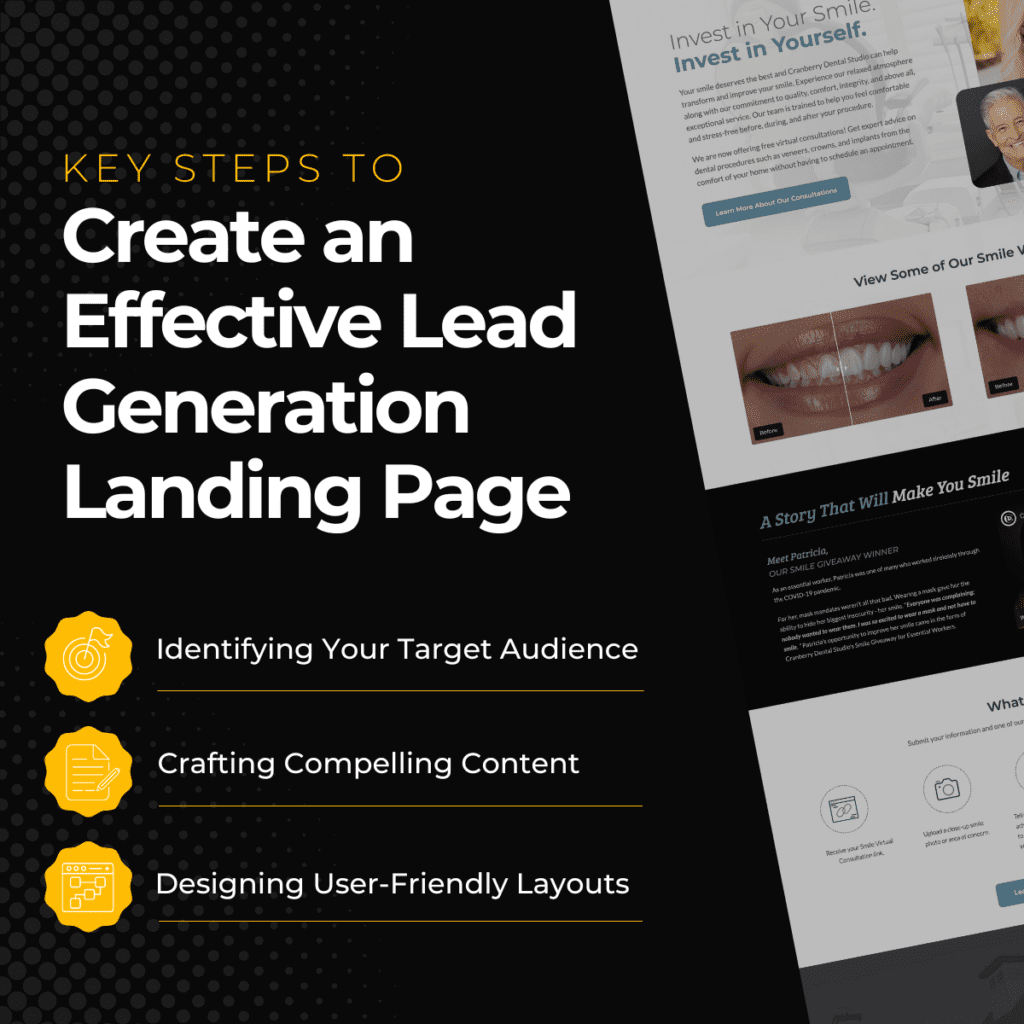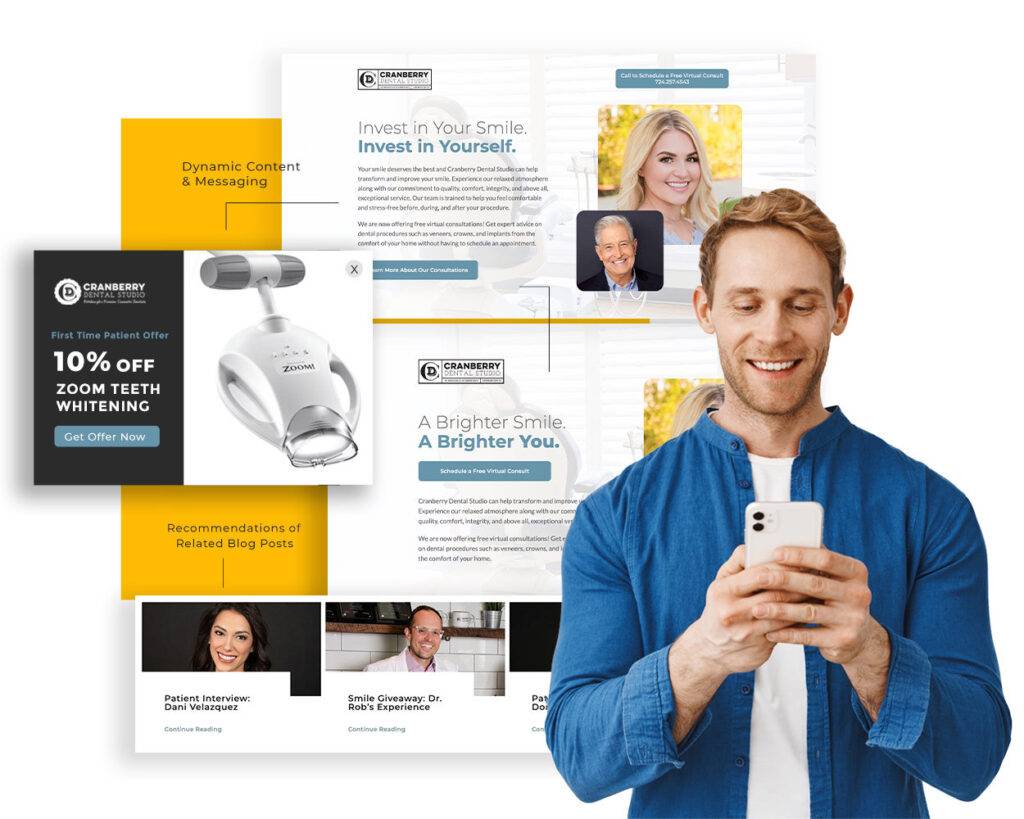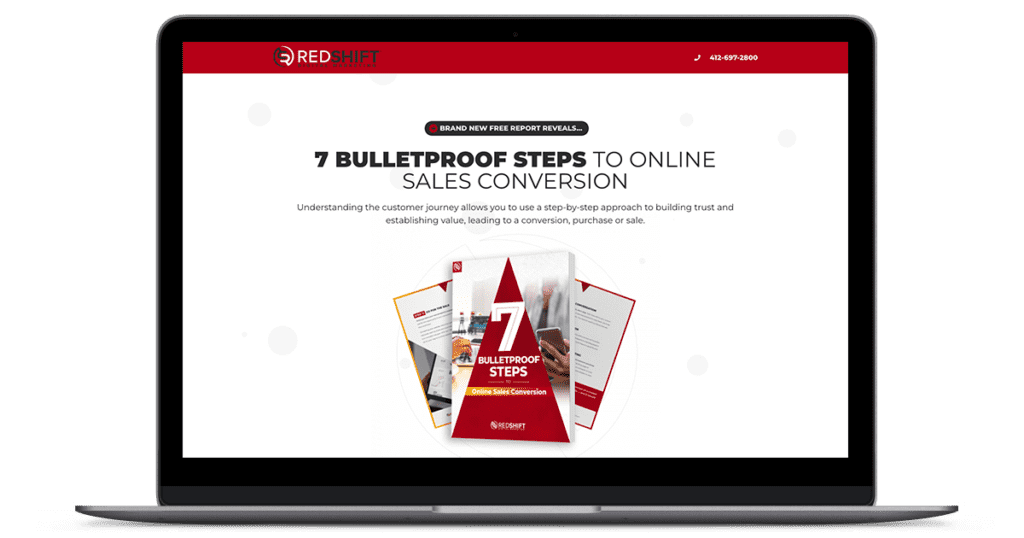Table of Contents
Get started generating reputable leads and creating conversions with RedShift’s guide to creating lead-generation landing pages
Creating a lead generation landing page can be intimidating. There is a lot more that goes into the process than people imagine. Many marketers recognize the importance of lead generation landing pages but lack an understanding of how to do it right. That’s why RedShift is here to guide you through the process so you can create the best lead-generation landing page possible for your business.
A well-crafted lead generation landing page will separate your business from the average marketing plan. With the right lead gen materials, you will start seeing measurable results in the form of leads. If you’re not optimizing these pages for maximum lead capture, you might never reach your full potential in online marketing.
Let’s discover some of the ways that you can create an effective landing page that will boost your paid and social efforts!
The Power of Lead Generation Landing Pages
As the digital marketing landscape continues to evolve, one aspect that’s gaining significant traction is lead-generation landing pages
Unlike your typical homepage, which serves multiple purposes, these specialized spaces are designed with a singular goal— converting visitors into potential leads. A landing page is not just a gateway for people to visit your site—they’re powerful tools aimed at getting those visitors to take action once there.
What Makes a Landing Page Different from a Homepage?
A well-structured homepage introduces your brand, showcases products or services, and provides company updates, among many other things. While this approach caters perfectly to users who want an overview of what you do, it may fall short when trying to capture specific user details for lead-generation processes.
On the flip side, lead-gen landing pages focus on one particular offer or service related directly to a targeted ad click or email campaign link. This makes landing pages more effective in prompting desired actions like form fills and sign-ups.
Fueling Your Marketing Campaigns
Your marketing campaigns can greatly benefit from high-quality leads generated through these focused landing pages too. Whether we’re talking social media posts promoting exclusive offers linked back to such page types or email marketing sequences utilizing captured data—having access to detailed prospect info enhances overall campaign effectiveness.
Key Steps to Create an Effective Lead Generation Landing Page
Follow these steps to create a lead-gen page that works for your business goals

The creation of a lead-gen landing page that performs exceptionally well is no small feat. It involves several important steps, with each contributing towards the ultimate goal—converting visitors into potential leads.
1. Identifying Your Target Audience
Prioritizing your target audience before embarking on any design process is essential. This knowledge will not only shape your messaging but also influence design choices for your lead-generation landing pages.
A proven method of identifying and understanding who you’re targeting can be through creating buyer personas. These semi-fictional profiles help marketers better understand customer behavior patterns, demographics, motivations, and goals.
2. Crafting Compelling Content
Content development, it’s all about striking a chord with the identified audience and capturing their attention. The challenge here lies in balancing engagement with value delivery.
Your headlines should serve as hooks that reel readers in instantly, while subheadings need to succinctly summarize what follows them.
Bullet points are also excellent tools for breaking down information into digestible chunks. Every textual element should have a distinct role when it comes to engaging your visitors.
3. Designing User-Friendly Layouts
Incorporating user-friendly layouts within these specialized pages encourages the desired action from visitors—whether you want your audience to sign up for newsletters or download resources like eBooks or whitepapers.
Fundamental elements such as color schemes should reflect your distinct brand identity, while typography should enhance readability. Image selection is another important element here. Your images ought to evoke emotions leading toward conversion. Additionally, form placement demands careful consideration. All these factors will contribute significantly towards making layouts user-centric and ensuring higher conversion rates.

Harnessing SEO for Your Lead Generation Landing Pages
To get the best lead-gen results, you need to prioritize adding SEO elements
When it comes to lead-gen landing pages, the role of search engine optimization (SEO) plays a very important role. It’s a key player in driving traffic and converting visitors into potential leads. But how exactly can your business harness SEO effectively when it comes to landing pages?
The Role of Keywords
Keywords are essential for SEO success. Search engines use them to decipher your page content and match it with user queries. If you’re wondering where to start with keyword research, there are several keyword research guides out there that can help.
Meta Descriptions Matter
Moving on from keywords, we need to discuss meta descriptions. Meta descriptions are short snippets that describe what users can expect when they click through to your site from SERPs. By optimizing your meta descriptions to convey the purpose of your landing pages and implementing keywords, you enhance the user experience for your audience.
Incorporating Link Building Techniques
Link building involves creating both internal links pointing toward other sections of your website as well as external backlinks leading back to yours. This is a great perfect if you’re looking for a robust strategy to get the best possible leads and increase traffic to your site.
Personalizing User Experience on Landing Pages
Make your landing pages stand out from the rest by adding key personalization elements

In the realm of digital marketing, a one-size-fits-all approach just doesn’t cut it anymore. Businesses need to offer personalized user experiences that cater specifically to their target audience’s unique needs and preferences.
This is particularly true when creating lead gen landing pages—these specialized web pages are your golden opportunity for making a strong connection with potential leads.
Dynamic Content Based on Visitor Behavior or Demographics
The beauty of dynamic content lies in its adaptability. It allows you to tailor your landing page design based on visitor behavior or demographics. This means displaying different messages, offers, and images depending on factors like geographical location, browsing history, or even time of day.
A classic example would be offering a free trial tailored towards first-time visitors as an incentive for them to convert into potential customers. There are several tools you can access that will provide more insights about how businesses can effectively use dynamic content personalization tools, ensuring each visitor feels valued and understood. When personalization is deployed effectively, it will increase conversion rates for your business
Leveraging AI for Personalized Recommendations
Moving beyond basic customization techniques involves leveraging artificial intelligence (AI). With advanced technologies such as machine learning algorithms, we can now rapidly and accurately process large amounts of data to determine user behaviors and preferences.
This AI analysis will inform recommendations made directly within your lead generation process. These recommendations may include suggesting relevant blog posts they may enjoy reading next after downloading an eBook from the site or recommending products similar to those they have shown interest in previously.
In the next section, we’ll be discussing how to determine the success of your lead generation landing page. Let’s take a look!
How to Measure Landing Page Success with Google Analytics
Ensure your landing page is effective by pulling metrics from Google Analytics
In the world of digital marketing, it is essential to know how to determine the success of your campaign and identify any areas for improvement in the future. To get these informative metrics, you need to look at Google Analytics. It’s not just about numbers and data—it’s about understanding user behavior on your lead-generation landing pages.
Analyzing User Behavior
The beauty of this Google Analytics is its ability to shed light on visitor interactions. Key metrics such as bounce rates, session duration, and pages per visit offer invaluable insights into audience engagement levels. Let’s take a look at a few examples!
- A high bounce rate might be indicative of content mismatch or design flaws that are driving visitors away after only a one-page view.
- If users aren’t sticking around for long (low session duration), perhaps the material needs to be more engaging, or there could be issues navigating through the site effectively.
- Fewer page visits may suggest lackluster calls-to-action (CTAs) or weak internal linking structures that fail to guide visitors toward more relevant sections within your website.
By pulling these metrics at regular intervals during your campaign, you can determine any current issues and plan to make improvements in the future.
Tracking Conversions
Beyond general behaviors are the specific actions tied directly to your lead gen efforts—conversions. By setting up Goals in Google Analytics, you can monitor activities like form submissions, free trial sign-ups, and downloads linked back to your lead magnet offerings.
The RedShift Approach to Creating High-Performing Landing Pages
Our team of master marketers knows how to develop effective lead-generation landing pages for your next marketing campaign

At RedShift, we don’t just create lead-gen landing pages. We craft digital hubs that convert visitors into potential customers and nurture leads through the sales funnel. Let’s quickly go over our approach so you know exactly what to expect.
1. Understanding Your Business Objectives
We start by getting under the hood of your business objectives for a comprehensive understanding of what you aim to achieve with your lead generation campaign. This process is called a marketing assessment.
This involves an in-depth discussion about your goals. Whether they are brand awareness or driving conversions, our team ensures these targets align perfectly with every aspect of the landing page design process.
2. Crafting Compelling Content
A good-looking website doesn’t cut it anymore—today’s internet users demand engaging content that resonates on a personal level while also conveying value proposition effectively. This requires expert copywriting with key SEO principles in mind. Let’s explore a few ways we optimize your written content here at RedShift.
- Your target audience needs compelling headlines and body text. This not only captures their attention but motivates them enough to share contact details.
- Our team leverages power words and persuasive writing techniques, ensuring this transformation happens smoothly.
- We also employ SEO best practices—because visibility matters too!
4. User-Friendly Design Elements
Clean layouts featuring intuitive navigation paths guide users toward the desired action without overwhelming them visually or cognitively. This balance between aesthetic appeal alongside functionality results in optimal user experience leading to higher conversion rates. At RedShift, our creative team prioritizes both equally.
Transforming Leads Into Customers
After you’ve garnered responses from your lead generation landing page, what comes next?
The journey from lead capture to conversion is a winding road—but with the right strategies in place—your business can navigate the process effectively. This process involves nurturing leads through email marketing campaigns and social media posts while guiding them down the sales funnel toward becoming paying customers.
Let’s take a look at how you can keep your potential customers engaged post-lead generation landing page sign-up and move them closer to making a purchase decision.
Email Marketing Campaigns: The Key To Nurturing Leads
To successfully nurture leads into clients, we need an effective communication channel like email marketing. Email allows us to maintain direct contact with our prospects by providing valuable content tailored specifically to their needs or interests. But remember, this isn’t just about sending promotional emails—educational ones are equally important too.
Your goal should extend beyond selling products or services. Aim instead for building relationships where your audience sees you as more than just another vendor. People buy from those they trust, so let’s make sure we’re working on establishing that trust factor.
Social Media Engagement: A Powerful Tool For Lead Nurture
Beyond email lies yet another potent tool for engaging potential buyers—social media. Social platforms allow businesses like ours not only to engage directly with audiences but also to answer questions promptly, which greatly enhances customer satisfaction levels. Let’s find out how you can use social media to support your lead-generation landing pages through these steps.
- A well-thought-out strategy will help keep leads interested while subtly reminding them of what problem-solving solutions our product offers.
- Keep in mind that each interaction presents an opportunity both in terms of engagement and showcasing brand values and personality.
- This connection then serves as the foundation upon which further interactions are built, ultimately leading to conversions in the long run.
Once you’ve built a strong relationship with your audience, they are far more likely to convert. With the right social strategy, you can enhance the performance of your lead-gen efforts.
FAQs About Lead Generation Landing Pages
How are landing pages helpful for lead generation?
Landing pages help in lead generation by providing a targeted platform to convert visitors into leads. They capture visitor data through forms, offering valuable content or deals in return.
How do you create a lead-generation landing page?
Create a lead gen landing page by identifying your target audience, crafting compelling content, designing user-friendly layouts, and optimizing the page for search engines. Personalize the user experience and measure success with analytics tools.
What is a landing page that generates leads?
A lead-generating landing page is specifically designed to capture visitor information such as email addresses. It usually offers something of value, like an eBook or free trial, in exchange for this information.
How do you write an article for a landing page?
An article on a landing page should be engaging, concise, and focused on the call-to-action (CTA). Use persuasive language that speaks directly to your target audience’s needs while guiding them toward conversion.
Lead-generation landing pages are the secret weapon of successful digital marketers. They hold immense power in driving traffic and converting visitors into potential leads. To create an effective one, you need to understand your target audience first. The content should resonate with them and be compelling enough to capture their attention.
A user-friendly design enhances the visitor experience, while SEO optimization boosts visibility and drives more traffic. Additionally, personalization is key—it strengthens connections with potential leads for higher conversions. Analytics tools help measure success and make data-driven improvements. The final step? Transforming these leads into customers through strategic nurturing.
Are you ready to elevate your business’s online presence? At RedShift, we specialize in crafting high-converting lead-generation landing pages tailored to any industry or parameters.
Our proven strategies have helped our clients achieve the key metrics and boost their qualified leads. To learn more about our innovative approach to digital marketing, schedule a call with our team of experts! Let’s get started!


